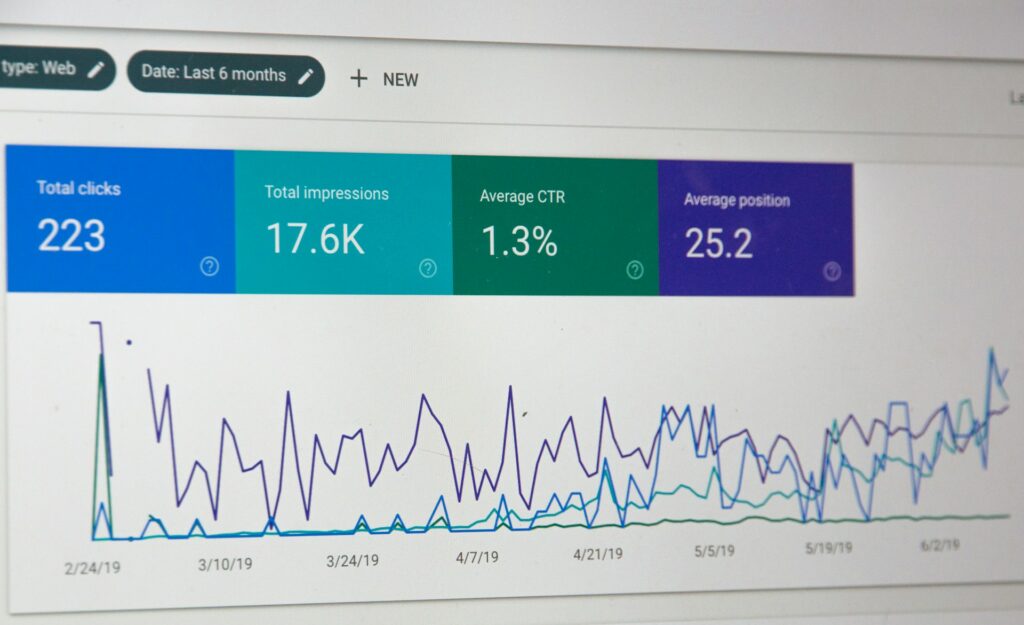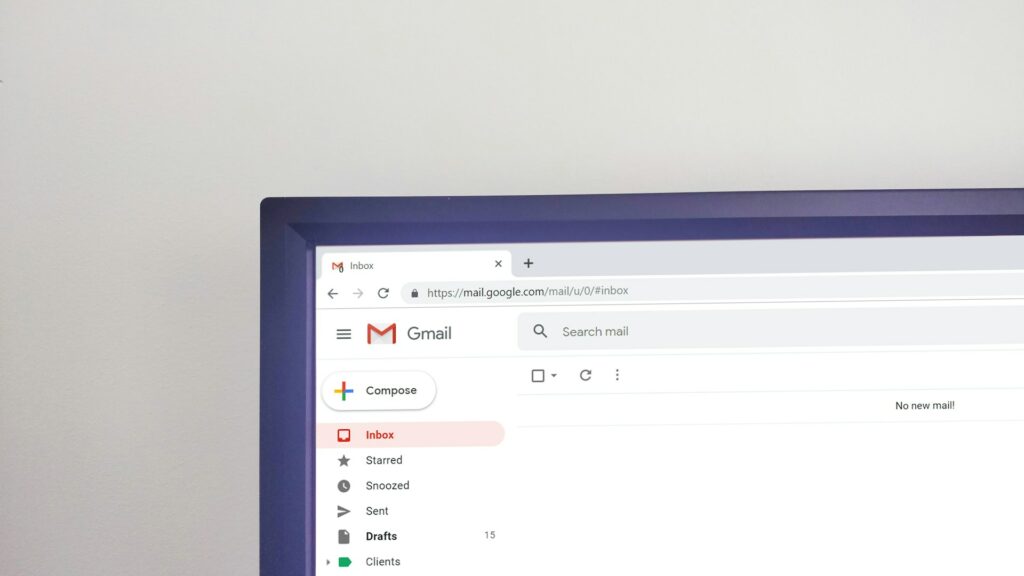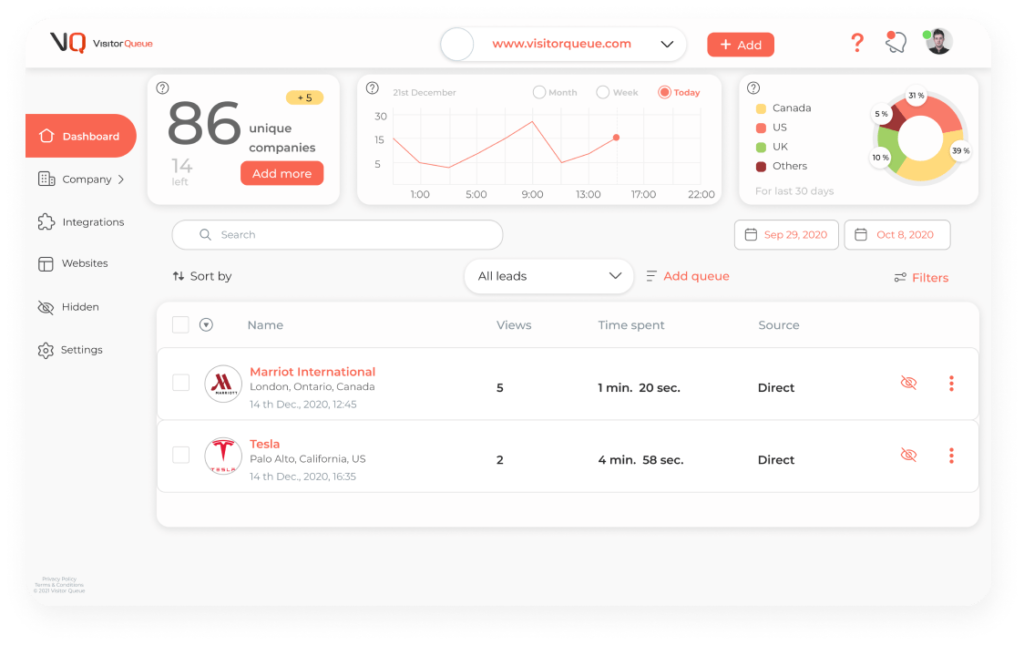Not all leads are created equal. And, not all lead generation strategies offer the same return on investment. Whether you’re spending time on inbound content, outbound sales, paid ads, or referral programs, knowing how to assess the ROI of your lead generation efforts is key to optimizing your strategies. In this article, we’ll break down how to assess the ROI of your lead generation strategy by reviewing key metrics, how to measure them, and which strategies tend to drive the highest return.
What is Lead Generation ROI?
ROI in lead generation refers to the value a company gains from its lead generation efforts compared to what it spends. It’s the difference between the cost of bringing in leads and the actual revenue those leads generate. If you’re spending $1,000 on a campaign that brings in $10,000 in new sales, that’s a strong return. But if you’re spending $10,000 to bring in $5,000 in sales, the campaign is losing money. Even if the lead volume looks impressive on the surface. Unlike vanity metrics such as clicks and impressions, ROI focuses on outcomes. It asks a simple question: are the leads you’re generating actually contributing to business growth?

Key Metrics to Measure the ROI of Your Lead Generation
To calculate ROI, you need more than just the number of leads. You need to understand the quality of those leads, how far they make it through your funnel, and what they’re worth once they convert. Here are some of the most important metrics to track.
Cost Per Lead (CPL)
Cost per Lead tells you how much you’re spending to acquire each lead. It’s one of the most basic but essential metrics because it reveals the efficiency of your lead generation activities. A low CPL typically indicates that your campaigns are cost-effective, while a high CPL may point to poor targeting or inefficient channels.
To calculate CPL, divide the total amount spent on a campaign by the number of leads it generated. For example, if you spent $2,500 on a LinkedIn campaign that brought in 100 leads, your CPL is $25. Keeping this number in check helps ensure you’re not overspending for contacts that may not convert.
Formula:
CPL = Total Campaign Spend / Number of Leads
Lead Conversion Rate
The Lead Conversion Rate measures the percentage of leads that turn into paying customers. It gives insight into the quality of your leads and the effectiveness of your sales process. A high conversion rate typically means your messaging, targeting, and sales follow-up are aligned. A low conversion rate may suggest that your leads are not qualified or your funnel is leaking.
To calculate it, divide the number of new customers by the number of leads, then multiply by 100 to get a percentage. For instance, if you generate 100 leads and 8 become customers, your conversion rate is 8%.
Formula:
Conversion Rate = (Number of Conversions / Number of Leads) x 100
Customer Acquisition Cost (CAC)
CAC measures how much it costs to acquire a new paying customer. Unlike CPL, which stops at the lead stage, CAC looks at the full journey to conversion. This metric is vital for understanding whether your lead generation efforts are financially sustainable. If your CAC is higher than your revenue per customer, your business is losing money.
To calculate CAC, divide your total sales and marketing costs by the number of new customers acquired over a specific period. For example, if you spent $10,000 and gained 50 customers, your CAC is $200. Keeping CAC lower than your Customer Lifetime Value is essential for profitability.
Formula:
CAC = Total Sales and Marketing Costs / Number of New Customers
Customer Lifetime Value (CLV)
Customer Lifetime Value estimates the total revenue you can expect from a customer over the entire duration of their relationship with your business. LTV is critical for understanding how much you can afford to spend to acquire a customer. When LTV is significantly higher than CAC, your lead generation strategy is working.
To calculate LTV, multiply the average purchase value by the average purchase frequency, then multiply that by the average customer lifespan. For example, if a customer spends $1,000 annually, stays with you for 5 years, and makes one purchase per year, their LTV is $5,000.
Formula:
LTV = Average Purchase Value × Purchase Frequency × Customer Lifespan
Marketing Qualified Leads (MQLs)
A marketing qualified lead is a lead that has shown interest in your offering and meets certain criteria indicating potential readiness to buy. This might include downloading a whitepaper, signing up for a webinar, or visiting key pages on your website. Tracking MQLs helps identify whether your marketing campaigns are targeting the right audience and creating engagement. MQLs are not yet ready for sales outreach but are a step above cold leads. By comparing the number of MQLs generated to the total number of leads, you can assess lead quality and campaign relevance.
Sales Qualified Leads (SQLs)
On the other hand, sales qualified leads are leads that have passed additional qualification criteria and are ready to be contacted by your sales team. This might mean they’ve requested a demo, had a qualifying call, or fit your ideal customer profile. Tracking SQLs is important because it directly connects marketing efforts to revenue opportunities. High SQL conversion rates typically indicate strong alignment between marketing and sales. If you generate many MQLs but few SQLs, there may be a misalignment in how leads are scored or handed off.
Return on Investment (ROI)
This is the most comprehensive metric and the one that ties everything together. ROI tells you how much profit you’re generating from your lead generation efforts relative to what you’re spending. A high ROI confirms your strategies are working and worth scaling. A low or negative ROI is a signal to reassess your approach.
To calculate ROI, subtract your lead generation costs from the revenue those leads generated, divide by the cost, and multiply by 100 to express it as a percentage. For example, if you made $50,000 in revenue from a campaign that cost $10,000, your ROI is 400%.
Formula:
ROI = [(Revenue – Cost) / Cost] x 100

How to Track and Analyze These Metrics
Tracking the right metrics is only half the battle. You also need tools and processes to collect and interpret the data. Here’s how to do it effectively.
CRM and Marketing Automation Tools
CRMs like HubSpot, Salesforce, and Zoho CRM can help you monitor every interaction that a lead has with your company. These tools can track where a lead came from, how they interact with your content, and how long it took for them to convert. Additionally, marketing automation tools can help you attribute leads to specific campaigns, helping your team prioritize certain marketing initiatives.
Set Up Conversion Tracking
If you’re running paid ads or content campaigns, make sure to set up conversion tracking through platforms like Google Analytics or LinkedIn Campaign Manager. This will help you understand which campaigns drive the most valuable traffic and conversions. Then, your team will be able to either optimize the underperforming campaigns, or reallocate resources into the campaigns that are performing better.
Assign Revenue to Lead Sources
Every lead should have a source attached to it, whether it’s from organic search, email campaign, social media ad, referral, or trade show. Once a deal closes, record how much revenue came from that source. This lets you identify which channels provide the best return. This can also be helpful for content repurposing. For example, if one of your blog articles is performing well and attracting MQLs, it can be a good idea to write a more in-depth version for a whitepaper.
Run Regular ROI Reports
Don’t wait until the end of the quarter to evaluate performance. Create a monthly or biweekly reporting process that gives visibility into which efforts are performing. Include both qualitative and quantitative data so you understand the full story behind each campaign. It can be helpful to integrate your lead generation efforts with a Google Sheet, to get real-time updates without the hassle of going through your CRM. And, anyone on your team whether they are in marketing, sales, or leadership, can review the sheet.
Integrate Sales and Marketing Data
Marketing might generate the leads, but sales closes the deals. If these two departments aren’t aligned, your ROI analysis will be incomplete. Make sure your CRM is shared between teams, and review closed-won deals together to evaluate lead quality. Additionally, try to align your tone of voice and strategies with both teams to ensure they are working with each other instead of against each other.

Lead Generation Strategies That Yield the Highest ROI
Not all lead generation strategies offer the same return. Some are more cost-effective, others more scalable, and some are better for long-term pipeline building. Here are some of my favorite ways to generate high-quality leads.
Organic Search
Organic traffic driven by content marketing and search engine optimization tends to offer the highest long-term ROI. While SEO requires upfront investment in keyword research, writing, and optimization, it continues to generate leads over time with little to no ongoing cost. Blog posts, guides, and landing pages that rank well can become a consistent lead source. To maximize ROI from SEO, focus on creating high-value, keyword-targeted content that addresses your buyers’ specific problems. Incorporate calls to action within your content, like a complimentary eBook on a blog page, to help drive more learning.
Email Marketing
Email remains one of the most cost-effective lead generation channels. Once you’ve built a list, sending newsletters, offers, or product updates costs very little. Personalized drip campaigns and segmentation increase engagement and help guide leads through the funnel. Ensure that your emails are well-targeted, mobile-friendly, and aligned with each stage of the buyer journey. Monitor open rates, click-throughs, and conversions to track performance.

Referral Programs
Word-of-mouth and referral programs often bring in high-quality leads with minimal acquisition costs. Leads that come through referrals usually convert faster and at higher rates because they already trust your brand through a third party. Offering small incentives like Amazon gift cards or formalizing a partner or advocate program can help you grow this channel and drive more revenue. Luckily, there are referral and affiliate marketing software that can make the management a lot easier.
Paid Advertising
Paid advertising can generate quick results, but it’s only cost-effective if properly managed. Ads on platforms like Google, LinkedIn, and Meta/Facebook can deliver strong ROI when targeting is precise and the offer is relevant. A common mistake is focusing only on impressions or clicks rather than conversions. To improve ROI, run A/B tests on ad copy and creative, use landing pages with clear CTAs, and retarget warm leads to increase conversion rates. Regular optimization is key to preventing overspending.
Webinars and Online Events
Educational webinars and virtual events can generate highly engaged leads. While they require planning and promotion, they help position your company as a thought leader and allow for direct interaction with potential customers. Follow up quickly after the event with resources, product demos, or a direct sales touchpoint to increase the likelihood of conversion. Ensure that your webinar is kept educational, with a call to action at the end.
Gated Content
Offering something of value, like an eBook, checklist, or whitepaper, in exchange for contact information, is a good way to build your email list. This strategy works well when paired with SEO, paid ads, or social media. Make sure your lead magnets are relevant to your target audience and aligned with what your product or service solves. Otherwise, you risk attracting leads that won’t convert.
Identify Website Visitors
What happens to the 98% of website visitors that don’t convert? With Visitor Queue, identify the anonymous companies that visit your website, finding out how they got to your website, the pages they visited, and how long they spent on each page. Additionally, we provide employee contact information to help your team reach out to potential leads and ensure they found what they were looking for. Start your 14-day free trial of Visitor Queue today and stop losing leads.

What’s Next?
The goal isn’t just to generate leads, but to generate the right leads, the ones that turn into real customers and contribute to growth. With a structured approach to measurement and strategy, you’ll be in a stronger position to drive meaningful ROI from your lead generation efforts. It can take some trial and error to figure out what your audience responds best to, so ensure that you keep track of your lead generation strategies along the way. As always, if you have any questions about using Visitor Queue to identify your website visitors, do not hesitate to reach out.
 Identify
Identify Personalize
Personalize Benchmark
Benchmark Agencies
Agencies Integrations
Integrations Case Studies
Case Studies Use Cases
Use Cases Blog
Blog Resources
Resources









